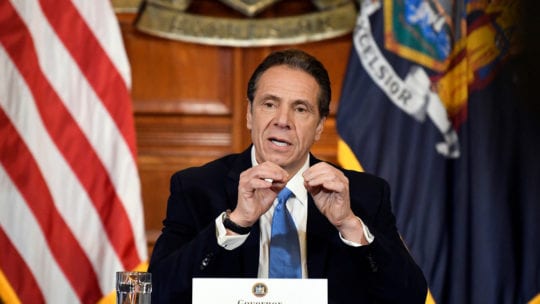
Examining the moves and decisions of prominent leaders during the pandemic can help identify the best practices and avoidable pitfalls applicable to managing COVID-19 and any crisis.
There are steps that every crisis response should follow: gather information, control the messaging, address misinformation and move forward with effective resolutions.
Gathering Information
Once you've determined a crisis exists, leadership must engage in a fact-finding mission. Complete it in 24 hours. Focus on basic facts.
Fact-finding, though, needs to be continuous throughout the crisis. In addition, crisis response must move forward despite lacking all the facts.
NY's COVID-19 Journey
Consider the early days of the COVID-19 outbreak. Although it was necessary, a statewide lockdown in NY seemed unfathomable. That quickly changed. Within weeks, NY embraced sweeping shutdowns and restrictions. While NY ultimately landed on the right decision, it should have come much quicker.
Savvy leaders make smart calls even when knowledge gaps exist. Nonetheless, NY's crisis response adapted as new information became available.
In addition to communicating well with the public, NY succeeded in the team it assembled. This team should include senior personnel from legal, operations, communications and HR. Additional experts can be added as necessary. The goal of a crisis management team is to detect and assess risk, develop mitigation strategies, get and deliver resources and assess impact.
Controlling the Message
The team needs to delegate someone to serve as the organization's voice throughout the crisis. Once that's done, develop and deploy a holding statement. Communicate what is: known, being investigated and still unknown. In addition, announce that you will keep the public informed as the situation unfolds.
A messaging strategy needs to be carried across the entire organization. A message echoed in all public statements makes the organization seem reliable, trustworthy and in control. Avoiding internal contradiction with clear communication between departments mitigates confusion.
Mixed Messages Hampered US Response
Conflicting directives and a lack of clear guidance hampered Washington's response to the pandemic. Contradictory information from the federal government, state and local governments and public health officials fueled confusion and mistrust.
Navigating an evolving situation means that mistakes may occur. Remaining transparent as you try to avoid or correct problems will earn you trust.
Addressing Misinformation
To battle misinformation, it’s critical to consistently flood the media with updates as the situation changes. It can be tempting to remain quiet, of course. Perhaps there's too much uncertainty or you wish to avoid informing audiences of the situation's gravity.
As NY Governor Andrew Cuomo’s direct communication during daily press briefings showed, people respond well to honesty and transparency. His use of clear language, statistics and facts from verifiable sources garnered praise for competent crisis communication.
While social media is a massive hub for misinformation, it can also be effectively leveraged to combat it. Facebook, YouTube, and other platforms have taken steps to stop the spread of viral misinformation surrounding COVID-19. They've flagged misleading posts and flooded timelines with PSAs related to the pandemic.
Moving Forward
Crisis management is an ongoing process. After a crisis, repercussions occur. Prepare to handle them.
In the case of COVID-19, proactivity and preparedness can help anticipate challenges we’re likely to face for the next few years. Parts of the country are slowly reopening, so it is critical for companies to assess and reevaluate their response. Staying vigilant, nimble, and on your toes will be necessary.
Eric Yaverbaum is CEO of Ericho Communications
